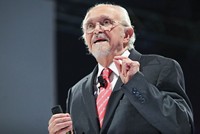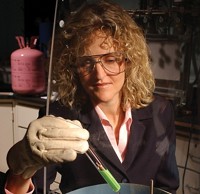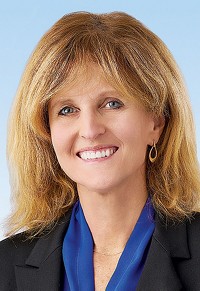Advertisement
Grab your lab coat. Let's get started
Welcome!
Welcome!
Create an account below to get 6 C&EN articles per month, receive newsletters and more - all free.
It seems this is your first time logging in online. Please enter the following information to continue.
As an ACS member you automatically get access to this site. All we need is few more details to create your reading experience.
Not you? Sign in with a different account.
Not you? Sign in with a different account.
ERROR 1
ERROR 1
ERROR 2
ERROR 2
ERROR 2
ERROR 2
ERROR 2
Password and Confirm password must match.
If you have an ACS member number, please enter it here so we can link this account to your membership. (optional)
ERROR 2
ACS values your privacy. By submitting your information, you are gaining access to C&EN and subscribing to our weekly newsletter. We use the information you provide to make your reading experience better, and we will never sell your data to third party members.
People
Perkin Medal Goes To Ian Shankland
Chemist receives award for alternatives to ozone-depleting fluorochemicals
by Marc S. Reisch
July 23, 2008
Ian Shankland, a physical chemist and director of technology for Honeywell Specialty Material's fluorine products business, will receive the 2008 Perkin Medal. The award recognizes work on alternatives to ozone-depleting fluorochemicals commonly used as refrigerants, aerosols, blowing agents, and sterilant gases. Shankland will receive the award at a dinner in his honor in Philadelphia on Sept. 18.
Given annually by the American section of the London-based Society of Chemical Industry, the award recognizes a scientist whose innovations have led to improvements in our quality of life and the competitiveness of the U.S. chemical industry.
The Perkin Medal was first awarded in 1906 to Sir William Henry Perkin, who discovered the first synthetic aniline dye in 1855. Shankland is the 102nd winner of the medal. Recent recipients include Gordon E. Moore, cofounder of Intel; Herbert W. Boyer, cofounder of Genentech; and Robert W. Gore, inventor of Gore-Tex.
Shankland says he is "honored and humbled" to receive an award given to so many prestigious scientists before him. He is an inventor listed on 49 U.S. patents, and he has published many technical and scientific papers.
The Honeywell scientist has a Ph.D. in physical chemistry from Australia's Adelaide University. After completing a three-year postdoctoral fellowship at Brown University, Shankland joined Honeywell's predecessor firm Allied Chemical in 1981, starting out in the firm's primary fluorochemical research lab in Buffalo, N.Y. His background in physical chemistry and thermodynamics were particularly relevant to research in fluorochemical refrigerants, he says. Not long after he joined the firm, "we were deep into the ozone crisis," he says. "It was a good time for science and the environment and a great time to be a chemist." Shankland and his colleagues undertook the development of a new generation of air conditioning and refrigeration fluids that did not deplete Earth's protective upper atmospheric ozone layer.
Shankland and his team screened and tested many compounds that led, for instance, to the zero-ozone-depleting refrigerants R-410A and R-507. More recently, he led a team at Honeywell that, together with DuPont, developed hydrofluoroolefin 1234yf, a new auto refrigerant with low ozone depletion and low global warming potential. Automakers are evaluating the refrigerant to meet new European Union requirements that go into effect in 2011.






Join the conversation
Contact the reporter
Submit a Letter to the Editor for publication
Engage with us on Twitter